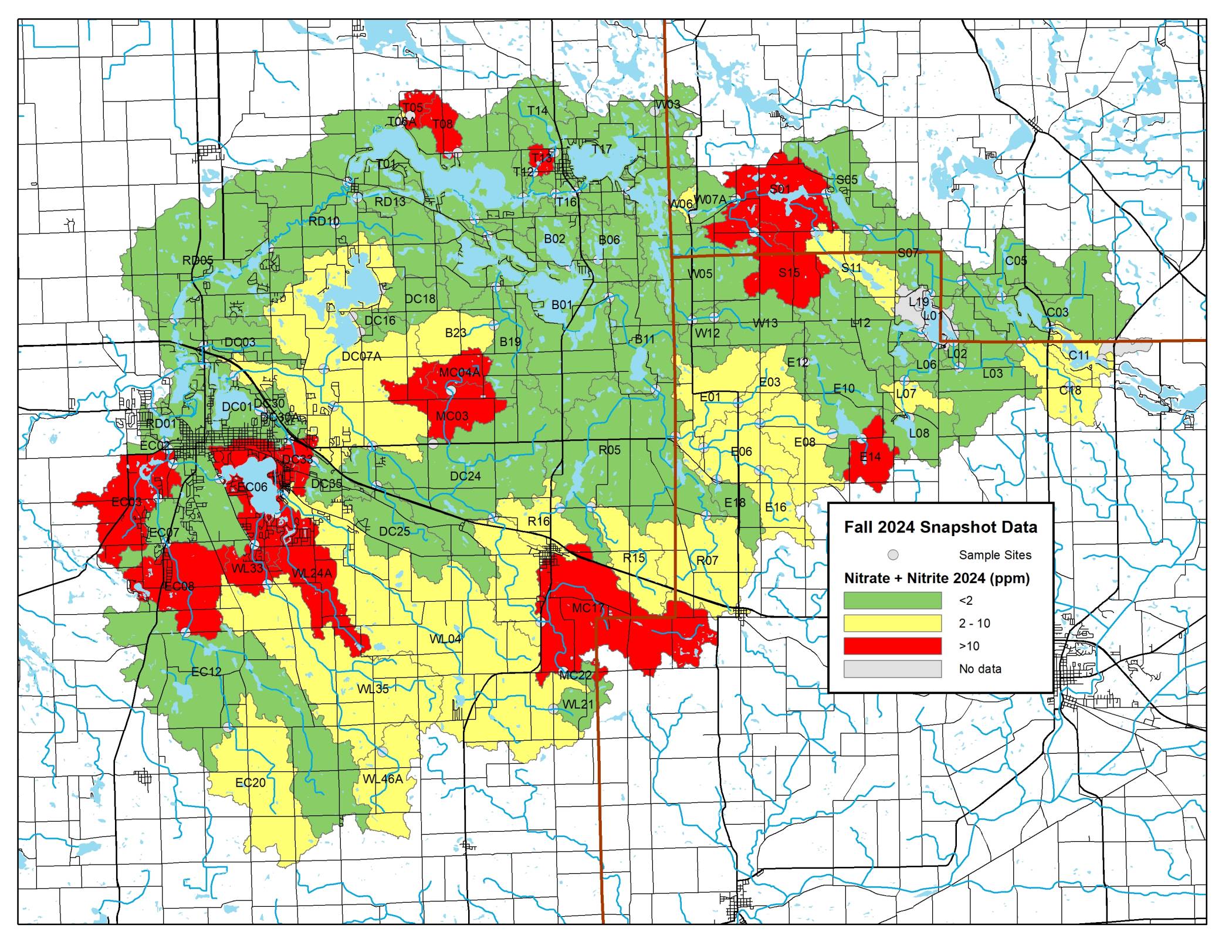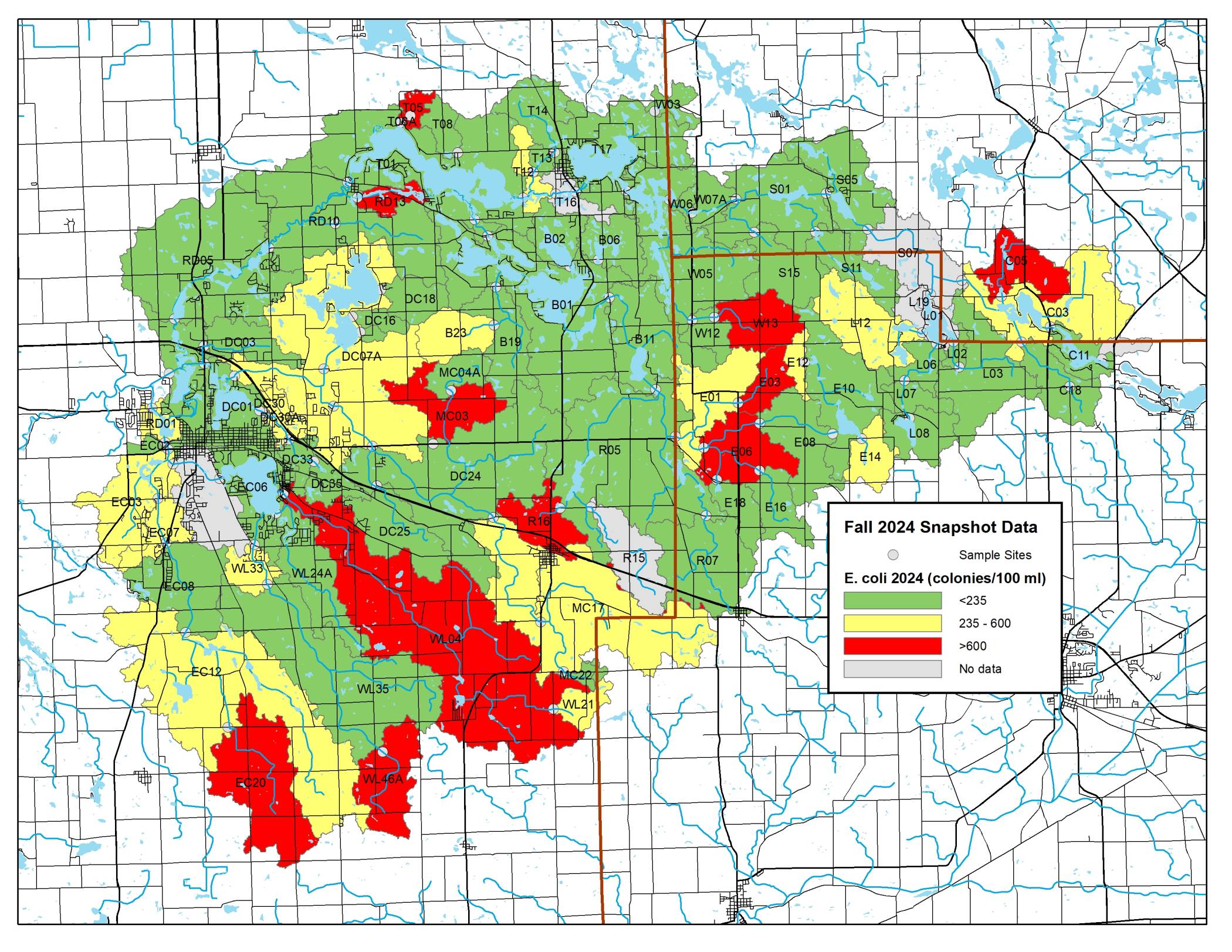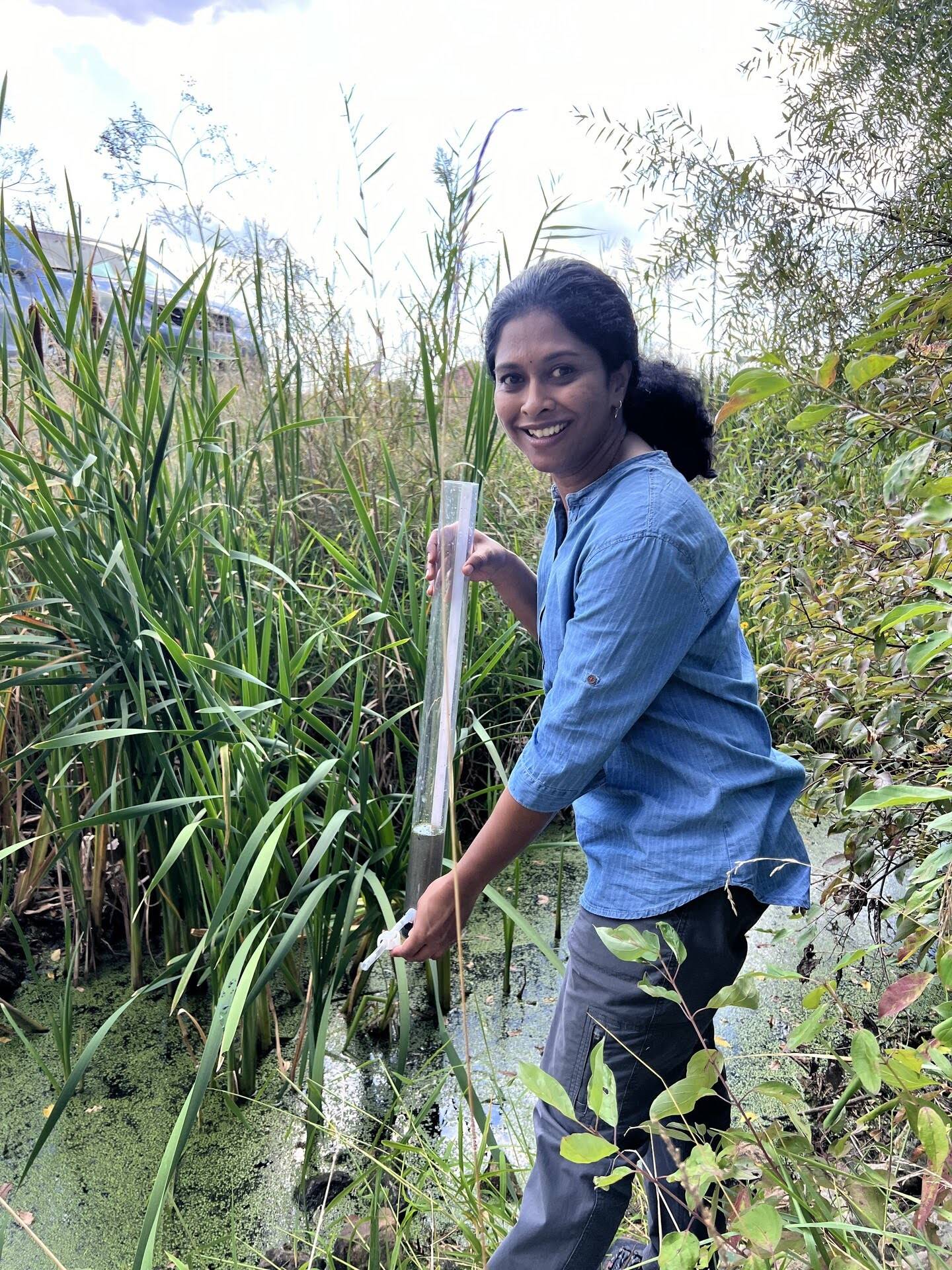Snapshot Water Monitoring Day 2024: Results Are In!
Saturday, November 2, 2024
Back in September, during our 8th annual Snapshot Water Monitoring Day, citizen scientists of all ages collected water samples and data from across our watershed. The result is an accurate, up-to-date “snapshot” of local water health.
“Snapshot Water Monitoring Day gives us a glimpse of the water quality in small ditches, creeks, streams, and larger rivers across our watershed,” says Lyn Crighton, Executive Director of The Watershed Foundation. “Some years we learn what happens after a recent rain. This year we saw the impacts of an extended drought. Each year we learn more about how different land uses, farming practices, and lawn care practices affect water quality in our community.”
We’ve analyzed and mapped the data. Now we’re excited to share it with you!
What does this year’s “snapshot” tell us?
Here are a few key takeaways:
Weather conditions impact water quality.

In the weeks leading up to Snapshot Day, drought had spread across our region. Water levels at many monitoring sites were low. That affected some key water quality indicators.
As water levels drop, so does the rate of flow and circulation. Flowing water helps flush and dilute pollution. Without that, sediment builds up, reducing water clarity. We see higher concentrations of nutrients like phosphorus and nitrogen, which can trigger algae blooms and excessive weed growth. Shallow, stagnant water also tends to be warmer and holds less dissolved oxygen, which affects aquatic creatures, like fish, and their habitats and ecosystems. All of these indicators matter for overall water quality–and this year, drought played a role.
This year’s snapshot looks good! Mostly.
Overall, our maps paint an encouraging picture of water health, even under drought conditions. Most of the water quality data captured at most of our monitoring sites falls within normal, healthy ranges. On the data maps, those areas are green. In areas where water quality data doesn’t meet certain standards, you’ll see yellow or red on the map.

Now, not all yellow and red areas are cause for concern. TWF is most concerned with the outliers–the handful of testing sites that show pollution levels way beyond health and safety standards. This year, we only found a few! For example, at two monitoring sites, we saw large concentrations of nitrogen, a nutrient that can negatively impact lake health. At another site, we found very high levels of E. coli bacteria, which can make humans sick.
When TWF spots problem areas like these, we get busy. We work with partners like the Kosciusko County Health Department to identify possible causes of pollution and craft solutions.
What’s “healthy?” What’s “safe?” It depends.
Water quality profoundly affects human health, so those red areas on our maps might seem scary and unsafe. High E. coli levels, for example, can make people sick–but not always. It depends on several factors, including how long you were in the water and whether you swallowed some. Not every encounter with bacteria will make a person ill. Not every red area on every data map is cause for alarm, especially when it comes to human health and safety.

When it comes to lake health over time, the red on our maps can be cause for alarm. Nitrogen and phosphorus, for example, feed weeds and algae. Too much of these nutrients is unhealthy for our lakes. They can decrease dissolved oxygen, hurt aquatic habitats, and more. Over time, they can be devastating, ultimately speeding up eutrophication — the death of a lake.
Lakes aren’t so different from humans in that way, Crighton explains. “If you eat junk food for years, eventually you’ll feel the consequences. Your health will decline. If we keep putting pollutants in our water, we’ll see the cumulative damage. Lake health will decline.”
That’s why the data TWF collects on Snapshot Day is so helpful. It can show us where and how pollution on land is getting into our water–and how we can stop it. That helps us protect human and lake health, now and for the future.
Snapshot Water Monitoring Day isn’t just about data.

It’s also about community and connection!
“Snapshot Day is unique because it gets lake lovers directly involved in the work that will keep our lakes clean and usable for many generations to come,” explains Caitlin Yoder, who coordinates the event. For the citizen scientists who participate, it’s a chance to learn, have fun, and make a meaningful difference for our local environment.
“My favorite part of the day is getting people involved and excited to learn about water quality,” says Crighton. “I love seeing the delight on their faces when they get back from sampling their stream sites and share their experiences in the watershed!”
Many thanks to the 64 incredible volunteers who made Snapshot Day 2024 possible. We’re already looking forward to next year’s event on September 18, 2025.
Want to join us? Click here to learn more about this unique citizen science opportunity!
You May Be Interested In:
Be a Hero for Healthy Lakes!
Our lakes need help. Our lakes need you. You can volunteer on clean water projects, take an action pledge, attend an event, donate funds – there are so many ways to make a difference! Will you join us?



